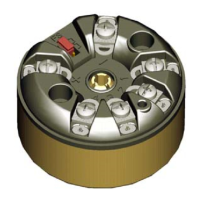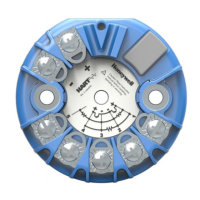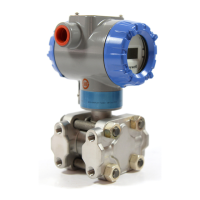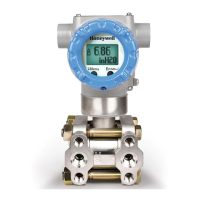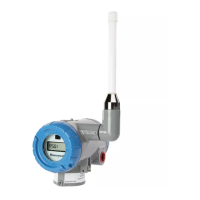PV AO Alm Type: displays the current position of the
failsafe jumper on the electronics board (upscale/
lowscale burnout)
Loop mA: Select the Loop Current Mode
configuration:
“Enable”: enables loop current mode (analog output
will operate as a 4 to 20 mA signal consistent with the
transmitter output)
“Disable”: disables loop current mode (analog output
will be fixed at 4 mA)
Loop test: This function enables the user to test the
Analog Output measurement at any value over the
full operational range. Select a current value to apply
and verify the current output on the loop with a
calibrated meter.
Note that this function is only available when “Loop
mA” (Loop Current mode) is Enabled.
D/A trim: perform an analog output calibration at 4.00
and 20.00 mA (0% and 100% output).
Change Sensor Type: select the specific type of
thermocouple, RTD, ohms or millivolt sensor for both
Sensor 1 and Sensor 2 inputs.
Sensor 1: Sensor 1 Config Parameters: Displays the
basic configuration parameters and allows
configuration of parameters relevant to Sensor 1,
including:
- Sensor type: TC, RTD, ohms or mv as
configured above
- Sensor ID: Specific sensor type as configured
above
- LRL, URL: Lower and Upper Range Limits
- LTL, UTL: Lower and Upper Transducer Limits
- Sensor 1 Install Date: A one-time writable date
used for Advanced Diagnostics on the Sensor
health.
- Lower and Upper Calibration Points: Enter the
Calibration values to be used during the LRV
Correct and URV Correct procedures
- Sensor 1 Bias: Enter any desired bias value to
be used for Sensor 1 measurement. Bias is
generally applied to compensate for input drift
due to sensor deterioration. Final Sensor 1
value = Sensor 1 input + Sensor 1 Bias.
Sensor 2: Sensor 2 Config Parameters: Displays the
basic configuration parameters and allows
configuration of parameters relevant to Sensor 2,
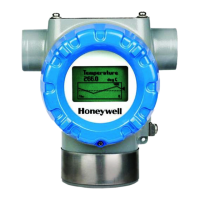
